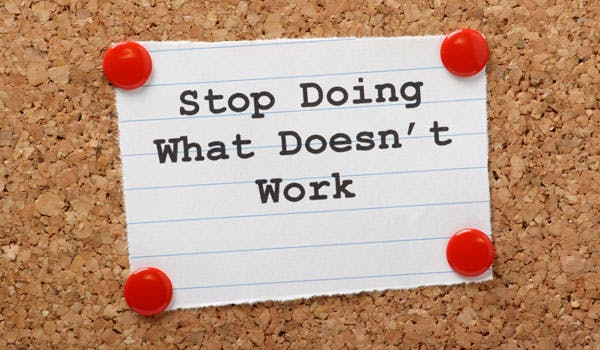For a growing business, mission statements are important in creating a culture, improving employee decision making and establishing a clear competitive difference.
However, a meaningful mission statement is notoriously difficult to get right. Too often they don’t really reflect the business or – perhaps worse – get completely ignored.
We recently spoke to 500 employees about business culture and found almost 40 per cent of workers couldn’t remember their organisation’s mission statement. The impact can be profound; those team members that didn’t know their business’ cultural values were more unhappy in their job and thought poorly of management practices.
Fortunately, there are some steps for most businesses to get the most out of this strategic tool.
Talk the walk
A lot of businesses confuse a mission statement with a long-term vision or goal. In our study, two out of five employees said one of the big problems with their mission statement was that it was so general it could apply to any company.
A truly effective mission statement should be about the specific service delivery or customer experience you can deliver, rather than what you hope to ultimately achieve. Remember it’s foremost a tool to guide the business’ overall strategy and day-to-day decision making.
For example, a dog-walking business might want to ‘deliver excellence in canine cardio development’ as its mission statement. But what do they mean by excellence and how does it differ to their competitors? Could an employee realistically use this to make choices in the workplace?
Create the link between mission and role
One of the biggest mistakes when it comes to developing a mission statement is to spend days drafting it but then filing it away in a bottom drawer, hoping that its existence alone will somehow provide clarity to employees around their purpose.
Once the mission statement is developed, it’s crucial that all team members understand how they can contribute to your overall business direction. This means everyone. Not just senior management or HR. Every single person in your organisation should understand the role they need to play.
For example, a trucking company’s mission statement of ‘always on time’ means different things for different employees. For the bookkeeper it means ensuring contractors are paid within a 14-day window, while for the mechanic it means using higher quality replacement parts because it reduces the risk of breakdown.
The important thing is that all the team members in the example above can use the mission statement to develop behaviours that best fit with the desired business culture.
When teams share values and work towards the achievement of common goals, the company’s values and mission statement comes to life and individual performance ties in with the organisation’s performance as a whole.
Make it the benchmark
Ultimately businesses need to continually monitor workplace behaviours to get the most out of their mission statement. Unfortunately, this doesn’t happen enough with less than 32 per cent of businesses measuring employee performance against the organisation’s values.
A good way to tackle this issue is to create an environment where employees can voice their opinions and provide feedback on individual and team performance against the cultural objectives. This approach requires team collaboration and commitment from all to be achieved.
Making your mission statement a more meaningful part of your business can be incredibly rewarding. The shared sense of purpose and workplace identity leads directly to improved productivity and more engaged employees.
About the Author
Kraig Grime, Director Leading Teams

